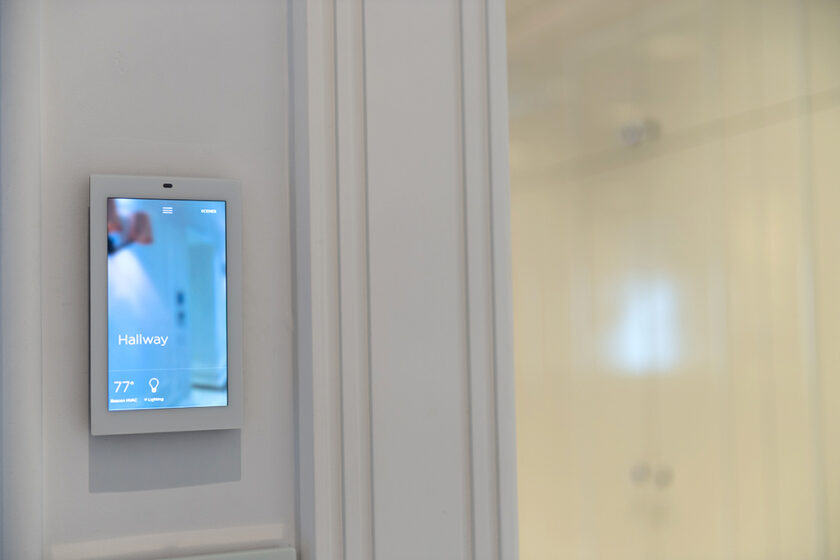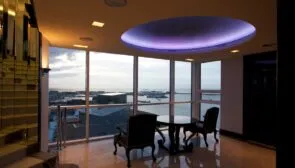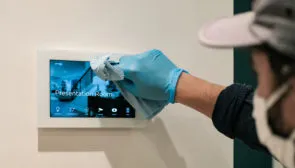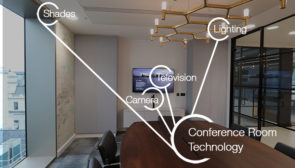The Single Most Important Part of Your Home Technology System

Would you feel comfortable if a General Contractor told you he could build your dream home without a set of architectural plans? Of course not. As we all know, a house is very complex and is built from many different items: a foundation, framing, plumbing, electrical, windows, doors, a roof, and the list goes on.
The need for a plan
How are all of these trades and systems going to come together successfully without a set of plans that these trades can collaborate from? The answer is obvious; it would be a disaster. Building the house without plans would take much longer. It would like result in many errors, a lot of change orders, cause a lot of frustration, cost more, and the end result would most likely not be what you expected.
In this article we will show you how this example compares to having smart space automation systems installed without the benefit and performance assurance of detailed design and engineering documentation provides.
The benefits of design and engineering documentation
Let’s bring this same way of thinking to a home technology system. We have never had such a wealth of technology options to make homes safer, smarter, more entertaining, and more fun to live in. It is common to have TVs, a Wi-Fi network, video cameras, thermostats, house-wide music systems, alarm systems, smartphones, tablets, and even smart lighting systems and motorized shades in one home. Many of these technology systems are expected to work together seamlessly and be intuitive and straightforward to use. This is no small task!
A home that is built with many different structural systems require detailed planning and drawings from an architect. Likewise, today’s electronic systems are a complex network of different electronic systems that need to be carefully planned well in advance of installation. Like a home’s architectural plans, your home technology system pro should create detailed design and engineering documentation for your project. This often involves coordinating with other trades, such as electricians, HVAC (climate) contractors, architects, general contractors, and interior designers. Above all, these drawings serve as the way to coordinate product locations and requirements efficiently.

How important is this documentation?
When HTA created a certification for technology integrators, many electronics manufacturers were interviewed. The goal was to determine what common factors they observed in successful technology installation firms. In other words, the firms that routinely make their clients happy. One of the key factors determined was that the best firms created detailed design & engineering documentation. Firms that generate this documentation were able to install home automation systems more efficiently. Therefore, they had less change orders, fewer problems, and were able to service the systems more efficiently when a problem happened. All of this adds up to happier clients that love the added convenience, safety, and entertainment factors that their home’s technology systems provided them.
As such, the HTA has set the bar high for HTA Certified home technology system professionals like us. We are proud to have qualified for their top ‘Estate’ tier. In order to qualify for HTA Certification at the Luxury and Estate tiers, home technology firms must offer and be able to provide, at minimum, the following design & engineering documentation:

1. Line diagrams or I/O (input/output) sheets
This documentation defines all of the wiring connections between the various electronic components. In most cases a home control system will control home amenities supplied by other contractors (such as HVAC, pools/spas, landscape lighting, etc.). Therefore, connections to these systems need to be defined, too. This ensures everyone’s efforts are coordinated and clearly defines each contractor’s scope of work.
2. Electrical requirements
Your electronic systems’ power needs should never be left to an educated guess. If you value reliability and performance, be sure your home technology pro defines the power requirements needed by all of the home technology systems they will install. The calculated power requirement documentation then needs to be shared early with your electrician or electrical engineer for it to become part of their specification. This one item alone can solve pesky reliability problems and expensive-to-fix change orders.
3. Cooling requirements
Electronics produce heat. The reliability and longevity of electronics drop off dramatically when kept in confined spaces without adequate cooling and ventilation. Your home technology system pro can and should calculate the heat load of your electronic systems. Importantly, they can then determine how best to cool them. On larger systems, this often involves coordinating with the HVAC contractor. They will need to make sure equipment rooms/component rack locations stay cool. The best companies always plan out how to keep equipment locations cool and safe.
4. Component rack drawings
It is important to keep your electronic component wiring tidy, for ease of service. Your home technology pro will almost always recommend using electronic component racks that the components securely mount within. These come in various heights, some with casters and some that can pull out of cabinetry and then swivel (for servicing). But how the components are arranged in the rack(s) should not be left to chance or figured out at the last minute. Rack drawings force your technology pro to “think through” the shortest wiring paths. Likewise, the best way to arrange the components for ease of servicing and heat dissipation.

A TSP Component Rack drawing

5. Prewire & device placement drawings
Especially on new construction and major remodel projects, it is extremely helpful to have your technology integrator create prewire & device placement drawings. What are device placement drawings? Once your technology pro gets a copy of the floorplan from your architect or general contractor, they will then place icons representing the home’s technology systems on the floor plan. This helps everyone visualize where TVs, speakers, wall controls, Wi-Fi access points, security cameras, etc. will be. These drawings also reveal which wires need to be run to which locations. Similarly, which locations will benefit from the addition of empty conduit to allow for future upgrades or expandability.
When these drawings are produced early in a project, they can be shared with other trades, often with aesthetic benefits. For example, you can opt to have wall controls such as thermostats, security keypads, and pool/spa controllers placed in convenient-to-access closets. Interior designers love the reduction in “wall acne”!
At TSP all is done in-house!
Not all home technology system installation companies are large enough to support an in-house designer/engineer to create these drawings, though it is fairly common for these installation pros to use a 3rd party engineering firm to create them. However, here at TSP Smart Spaces it is done in-house. Our commercial home automation systems, residential smart space automation projects, and conference room AV solutions alike feature in-house designs.
The HTA highly recommends such documentation for any sizable project. Especially, with smart home projects and projects where the overall technology budget is indicated at $50K or more. Even a fairly basic surround sound system for your Living Room will benefit from this documentation. Be sure to ask for a quote for this documentation, it will be one of your best technology system investments.
Additional benefits
From TSP’s point of view, the additional design and engineering documentation create other cost-saving and risk-reducing benefits for you:
- We “think through” complete system functionality well before installation. This ensures the benefit of catching potential performance issues and possible product omissions.
- Other contractors who are affected by home technology systems (climate, pool/spa, fountains, etc.) are informed in advance of home control system integration. These contractors appreciate the early coordination and wiring diagrams. Importantly, we are also able to confirm that the products they specify are compatible with your future control system. Any adjustments that needs to be made in product spec can happen early, saving time, cost, and frustration later on.
- Having each technology system’s design and construction details fully documented allows these systems to be assembled/disassembled efficiently. This reduces the cost of the build for us and other contractors.
- For technology systems to be serviced efficiently, project documentation helps us determine quickly where a fault might be. This leads to quick, efficient remote service.
- When all connections are defined in advance, the control system programming / configuration can be created many weeks ahead of final installation. This shortens the length of time that our team has to be onsite to complete the build.
- We can discuss the effect of technology obsolescence with you before a wire is pulled. With our design in hand, we can talk about how long each component of your smart home will stand the test of time.

Money well spent
Though design & engineering documentation adds up-front costs to your technology project, it is money well spent. Overall final installation costs are higher without documentation, and long-term costs will almost always be higher once service calls and future upgrades are factored in.
HTA’s research has shown that in over 95% of technology projects, no final engineering documents are ever created. For TSP Smart Spaces, a leader in home automation in Boston, your smart space design is this starting point for 100% of our projects and the quality of our installations and smart home support show our clients time and time again that our process works.



